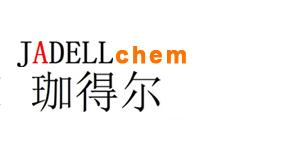Recombinant Mouse Transforming growth factor-beta receptor type 2, His 由带有 His 标签的 C 端蛋白激酶域和 N 端胞外域组成。TGF-beta receptor type-2 是TGF-β 家族所有成员的配体结合受体。
Synonyms
TGFR-2; TGF-beta type II receptor; TGF-beta receptor type 2; TbetaR-II
Species
MouseSource
HEK 293 Accession
Q62312-2 Gene ID
21813 Molecular Weight
25-38 kDa AA Sequence
IPPHVPKSVN SDVMASDNGG AVKLPQLCKF CDVRLSTCDN QKSCMSNCSI TAICEKPHEV CVAVWRKNDK NITLETVCHD PKLTYHGFTL EDAASPKCVM KEKKRAGETF FMCACNMEEC NDYIIFSEEY TTSSPDHHHH HH Biological Activity
Data is not available. Appearance
Lyophilized powder. Formulation
Lyophilized after extensive dialysis against PBS, pH 7.4. Endotoxin Level
<1 EU/μg, determined by LAL method. Reconstitution
Reconstitute the lyophilized recombinant Mouse Transforming growth factor-beta receptor type 2, His (HEK293-expressed) (rMuTGF-beta receptor 2, His) to 100 µg/mL using ddH2O or diluted with PBS. Storage & Stability
Lyophilized recombinant Mouse Transforming growth factor-beta receptor type 2, His (HEK293-expressed) (rMuTGF-beta receptor 2, His) is stored at -20°C. After reconstitution, it is stable at 4°C for 1 week or -20°C for longer. It is recommended to freeze aliquots at -20°C or -80°C for extended storage. Shipping
Room temperature in continental US; may vary elsewhere. Background
Transforming growth factor-beta (TGF-β) is a pleiotropic cytokine with the capability to act as tumor suppressor or tumor promoter depending on the cellular context. TGF-beta receptor type-2 (TGFBR2) is the ligand-binding receptor for all members of the TGF-βfamily and expressed in virtually all cell types including fibroblasts. Regulation of tumor-stromal cross-talk through fibroblastic TGF-βpathway may depend on fibroblast phenotype, emphasising the importance to characterise tumor microenvironment subtypes[1]. |



